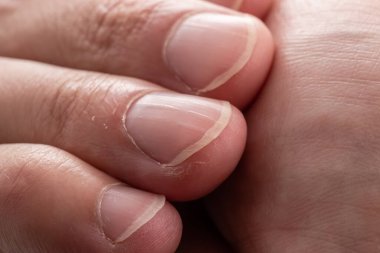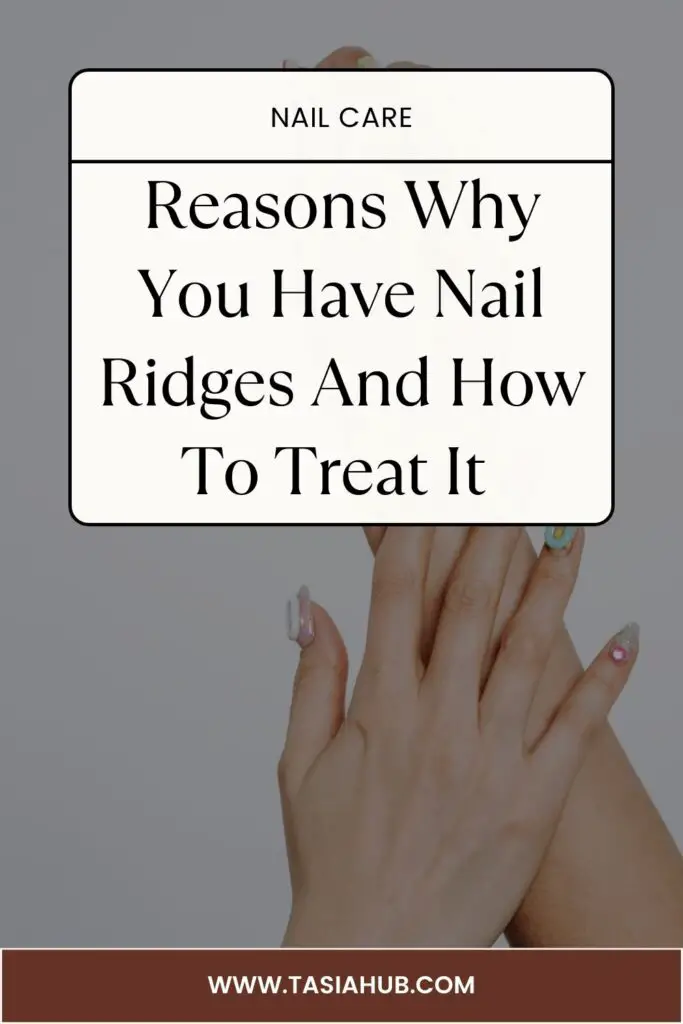Why Nails Have Ridges: Understanding The Causes And Treatments

Our nails are not just decorative features, they can provide important clues about our overall health and one common nail issue that many people encounter is the presence of ridges.
These ridges can be visible lines or dents that appear on our fingernails or toenails, while ridges can be a sign of an underlying health condition or previous injury, they can also be harmless.
So why do nails have ridges? you may ask
In this article, we will explore the various causes of nail ridges, the potential role of vitamin and mineral deficiencies, treatment options, and preventive measures. So let’s dive in and uncover the reasons behind those pesky ridges on our nails.

Understanding Nail Ridges: Why Nails Have Ridges
Vertical Ridges: A Natural Part of Aging
As we age, it is common to notice the emergence of vertical ridges on our nails, these lines, known as longitudinal ridges, are typically harmless and not a cause for concern.
They are a natural part of the aging process and do not indicate any underlying health issues, however, it’s important to differentiate between normal aging ridges and those that may be a result of other factors.
Health Conditions And Ridges
Certain health conditions can cause ridges, dents, or lines on our nails, vertical ridges may be associated with the following:
- Skin Conditions: Individuals with very dry skin or eczema may experience vertical lines on their nails.
- Thyroid Disease: Hypothyroidism, a condition characterized by an underactive thyroid gland, can lead to thick, brittle nails with vertical ridges. Nails affected by this condition may also crumble or break easily, and the fingertips may appear puffy and rounded.
On the other hand, horizontal ridges or dents, also known as Beau’s lines, can be caused by various factors, including:
- Chemotherapy: Cancer treatments such as chemotherapy can interrupt nail growth and result in the development of Beau’s lines.
- Nail Trauma: Injuries to the nails, such as slamming a finger in a door or dropping something heavy on a foot, can lead to the formation of horizontal ridges.
- Peripheral Vascular Disease (PAD): Individuals with PAD, a condition that affects blood flow to the extremities, may experience horizontal ridges on their nails.
- Severe Illness: Serious illnesses accompanied by high fever, such as COVID-19, measles, or pneumonia, can cause horizontal ridges to appear on the nails.
The Role Of Vitamin And Mineral Deficiencies
Nutritional deficiencies can also contribute to changes in nail appearance, two specific deficiencies that can cause nail issues are zinc deficiency and iron deficiency.
Zinc Deficiency And Nail Ridges
Zinc deficiency can manifest as Beau’s lines and white spots on the nails. These lines and spots can be unsightly and may cause concern. If you suspect a zinc deficiency, it’s important to consult with a healthcare provider who can guide you regarding appropriate supplementation.
Iron Deficiency And Nail Ridges
Iron deficiency can lead to the development of vertical nail ridges and a condition called koilonychia, commonly known as spoon nails.
Spoon nails are characterized by a depression in the middle, giving the appearance that the center of the nail has been scooped out. In severe cases, a drop of water can even be held on the nail, if you suspect an iron deficiency, seeking medical advice is crucial for proper diagnosis and treatment.
Treating And Managing Nail Ridges
If you notice ridges on your nails, it is essential to consult with a healthcare provider to determine the underlying cause. Treating the root cause can often improve the appearance of your nails and promote the growth of healthier nails.
For instance, medication for thyroid disease can have a positive impact on related nail problems, in cases of nutritional deficiencies, your healthcare provider may recommend iron or zinc supplements under their guidance.
Although it takes time for nails to grow out and show improvements, there are some steps you can take at home to help manage nail ridges:
- Moisturize: Apply moisturizer to your nails and cuticles daily to alleviate dry skin or eczema. For optimal results, apply a skin cream to your hands before bedtime and wear thin cotton gloves, the same can be done for your feet by applying cream and wearing cotton socks.
- Consider Biotin Supplements: Consult with your healthcare provider about the potential benefits of biotin supplements for promoting nail growth.
- Avoid Damaging Habits: Refrain from biting your fingernails or cutting your cuticles, as these habits can worsen nail ridges.
- Give Your Nails a Break: Taking breaks from using gel manicures, artificial nails, or acrylics can help prevent the weakening and drying out of the nails.
- Proper Nail Care: Trim your fingernails with a curved shape and your toenails straight across. Additionally, using a nail buffer to gently smooth the surface of your nails can improve their appearance.
- Protect Your Hands: When working with chemicals such as household cleaners, it’s essential to wear gloves to shield your hands and nails from potential damage.
Preventing Nail Ridges
While it’s challenging to guarantee the prevention of nail ridges, there are steps you can take to minimize their occurrence.
Regularly scheduled appointments with your healthcare provider can help identify any changes in your nails and address them promptly.
By keeping your provider informed about any nail changes, you can work together to identify potential underlying causes and implement appropriate treatments.
When To Seek Medical Attention
It is crucial to inform your healthcare provider if you notice new ridges or lines on your nails, while some ridges may not require immediate treatment, it is essential to investigate their cause.
Additionally, if you observe any other changes in your nails, such as changes in shape, color, or the presence of dents, redness, or swelling around the nails, it is important to consult with a healthcare professional.
Remember, your nails provide valuable insights into your overall health, don’t ignore nail ridges; instead, seek guidance from your healthcare provider to determine the cause and necessary steps for treatment.
With time and appropriate care, you can expect to see new, smoother nails growing in, and if the ridges are not associated with an underlying health condition or deficiency, the tips provided in this article can help you maintain healthy nails at home.
Note: The information provided in this article is for educational purposes only and should not be substituted for professional medical advice. Always consult with a healthcare provider for personalized guidance and treatment.
